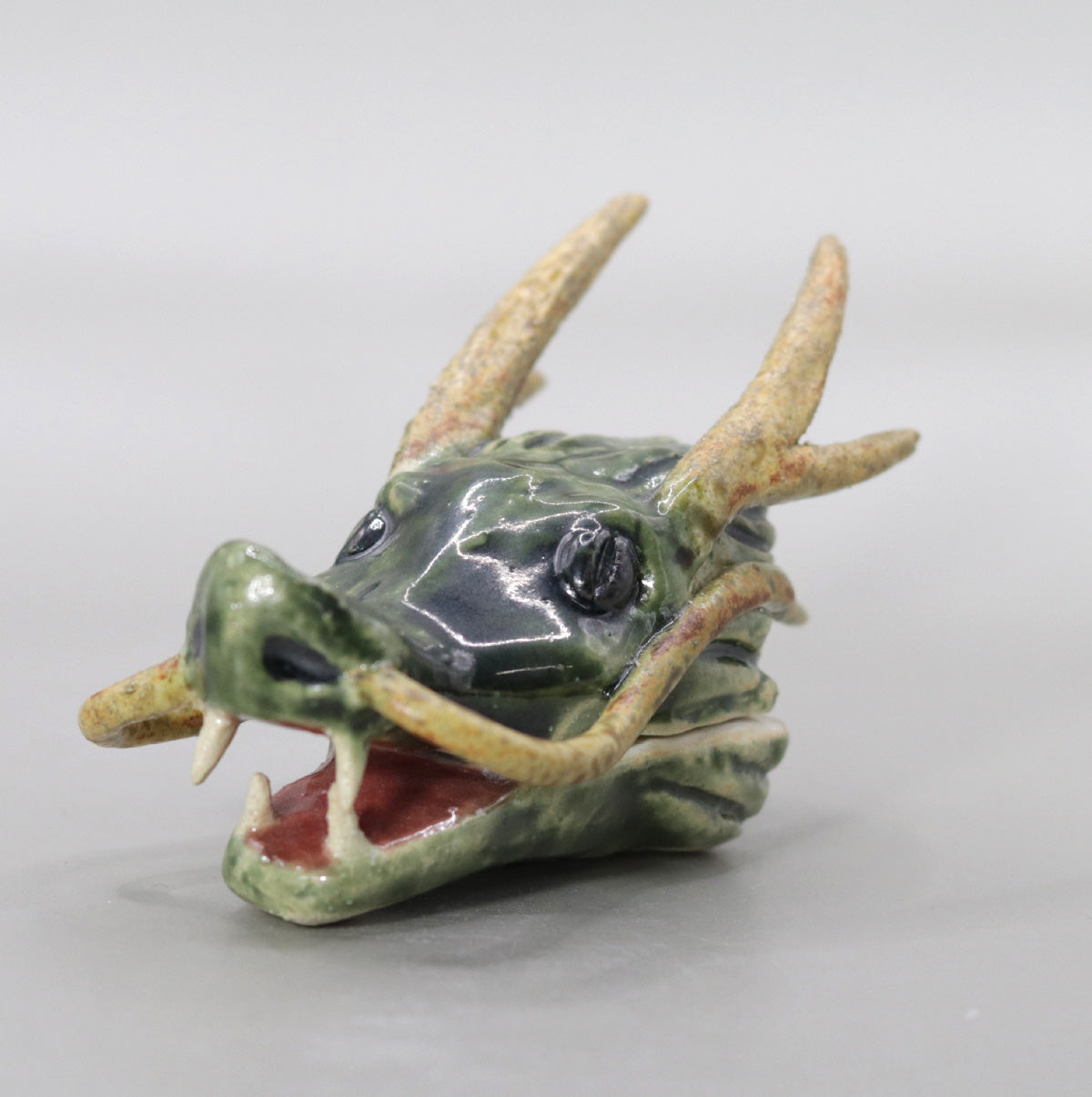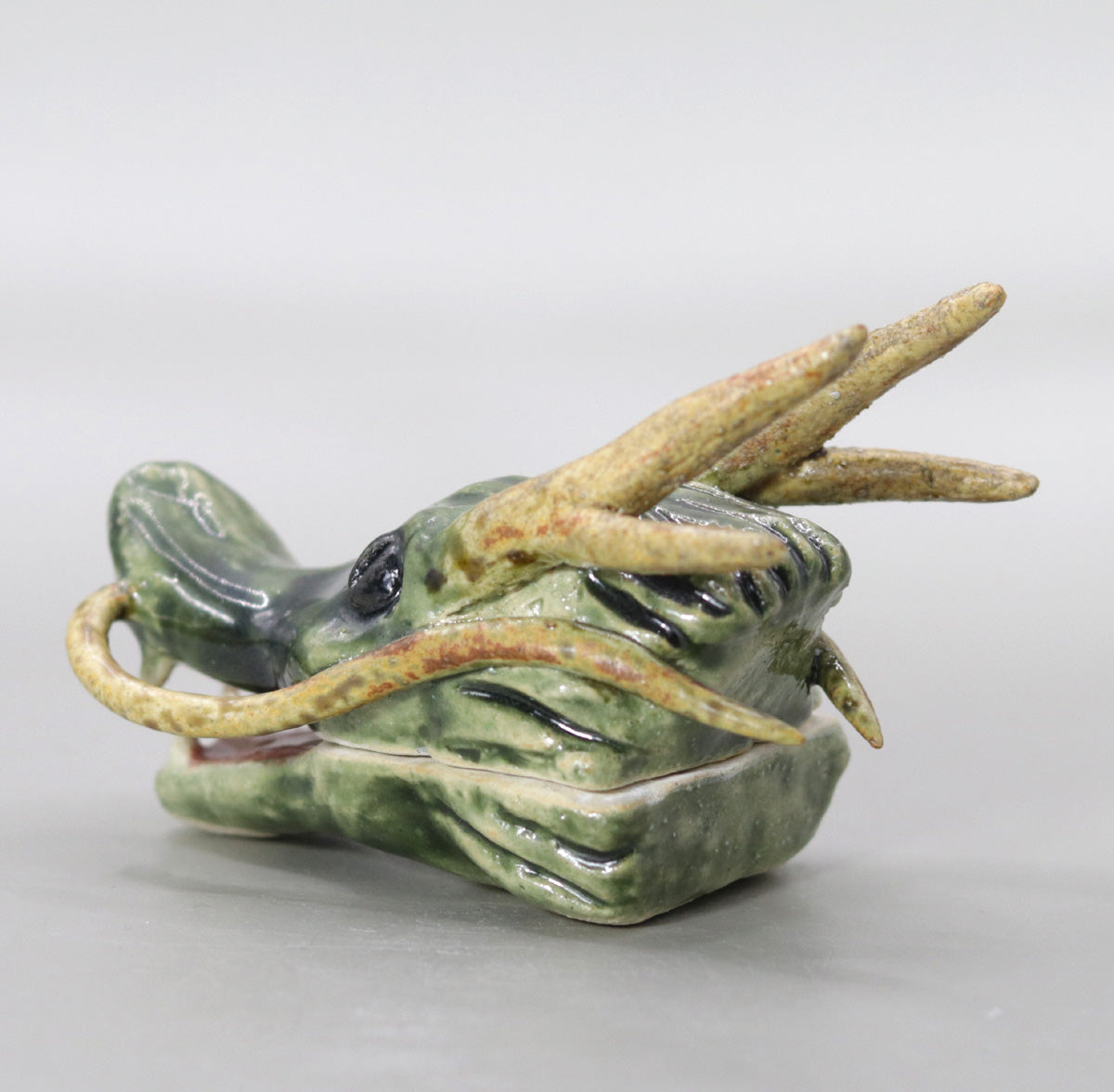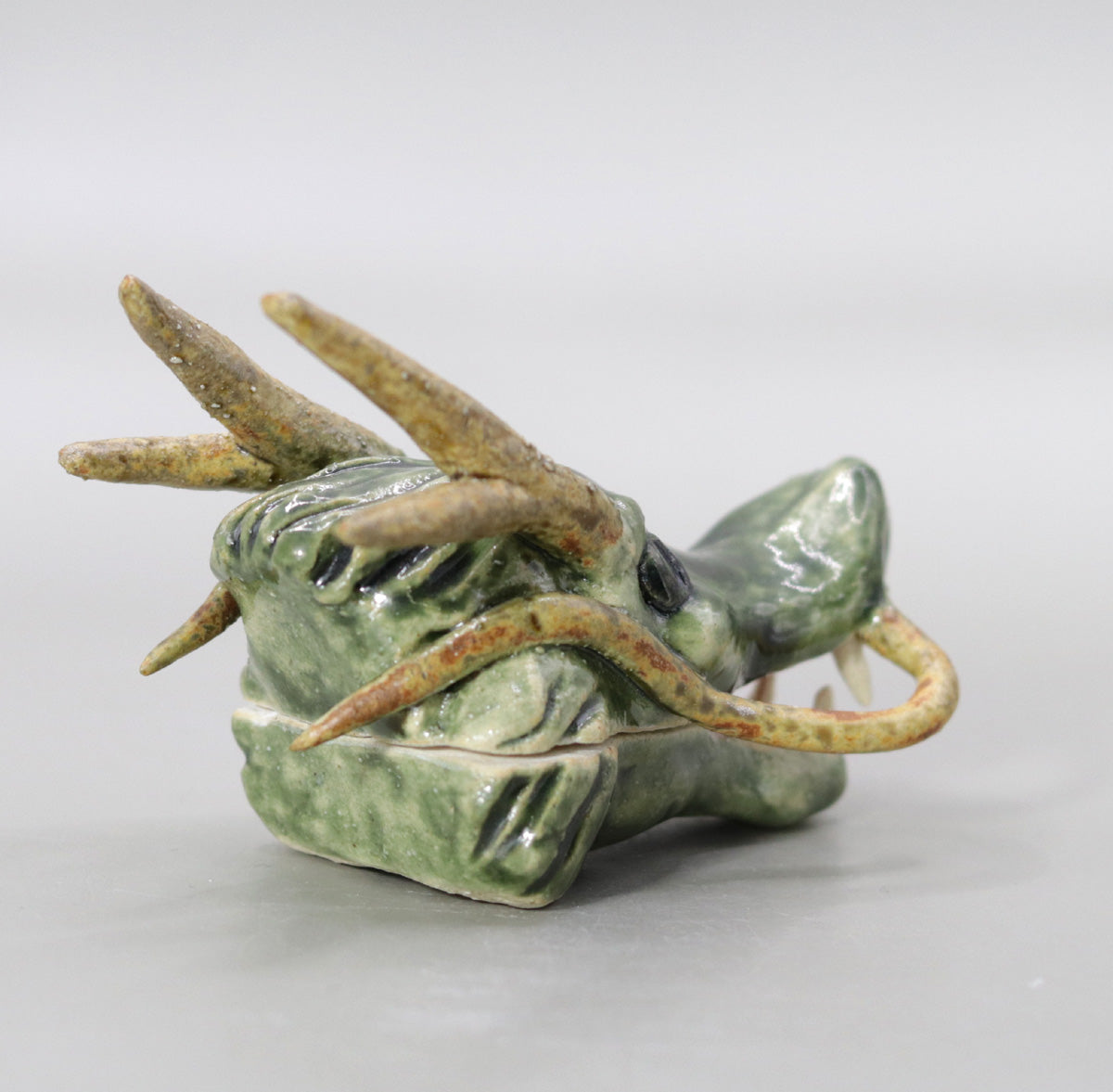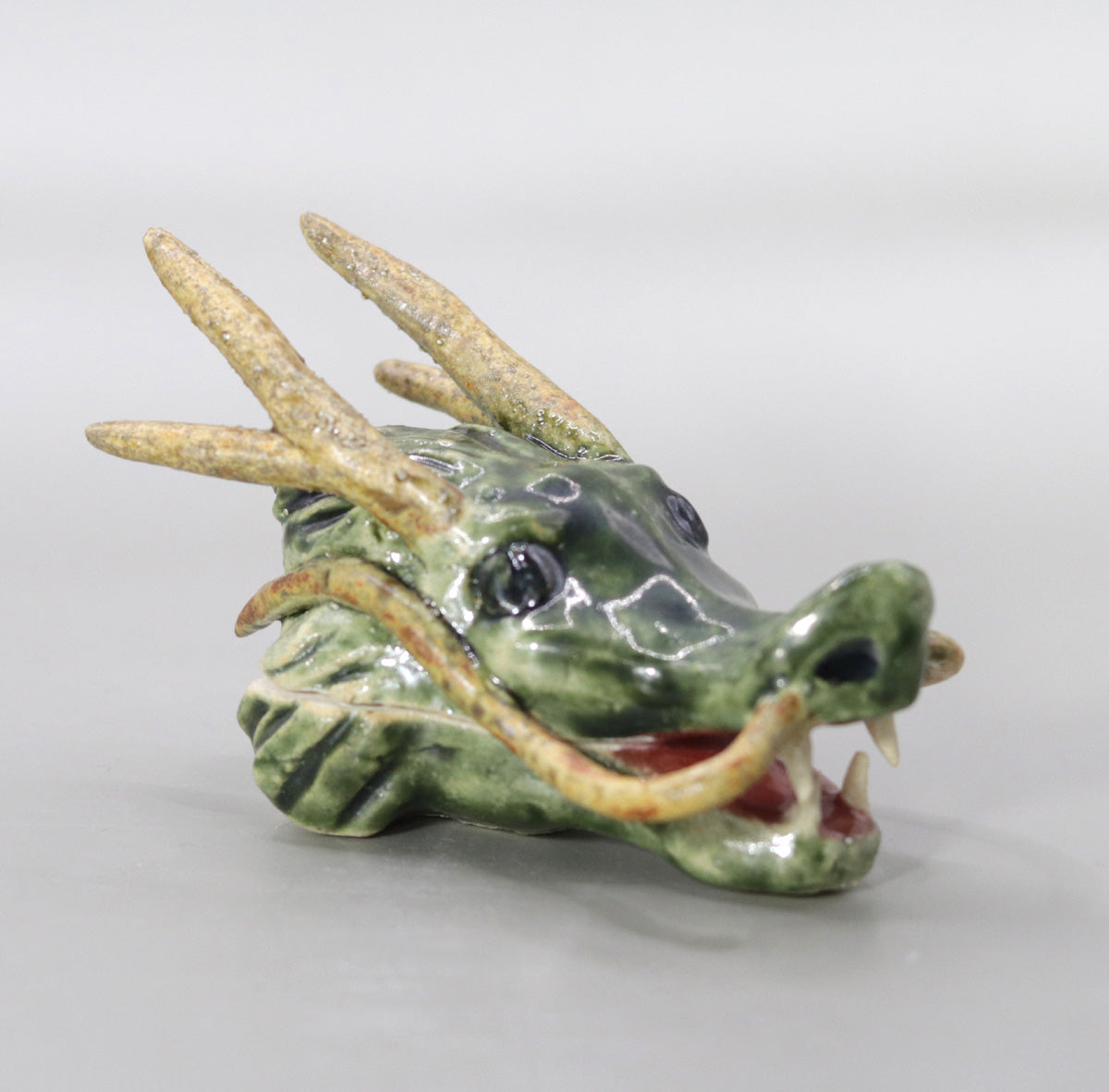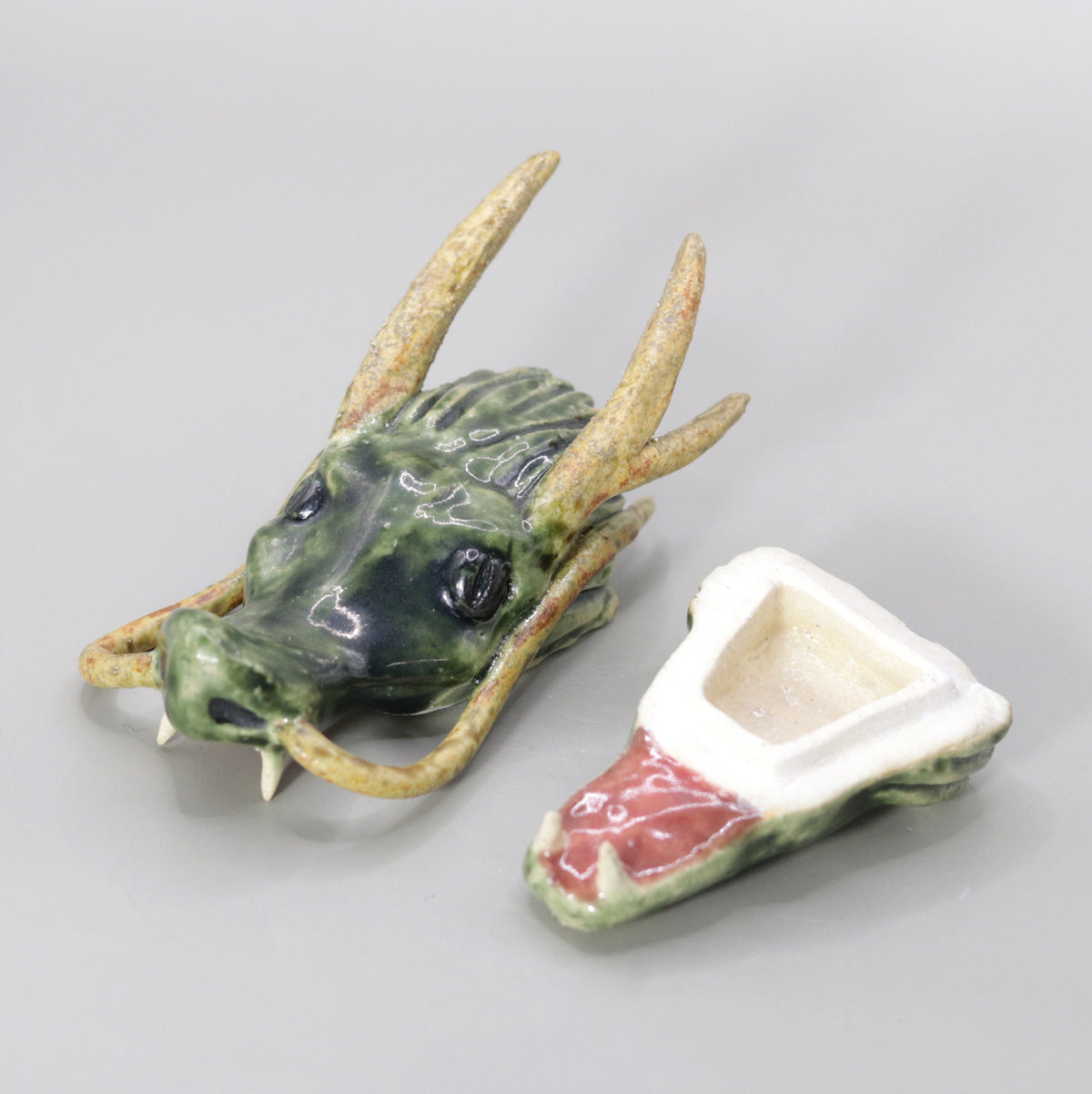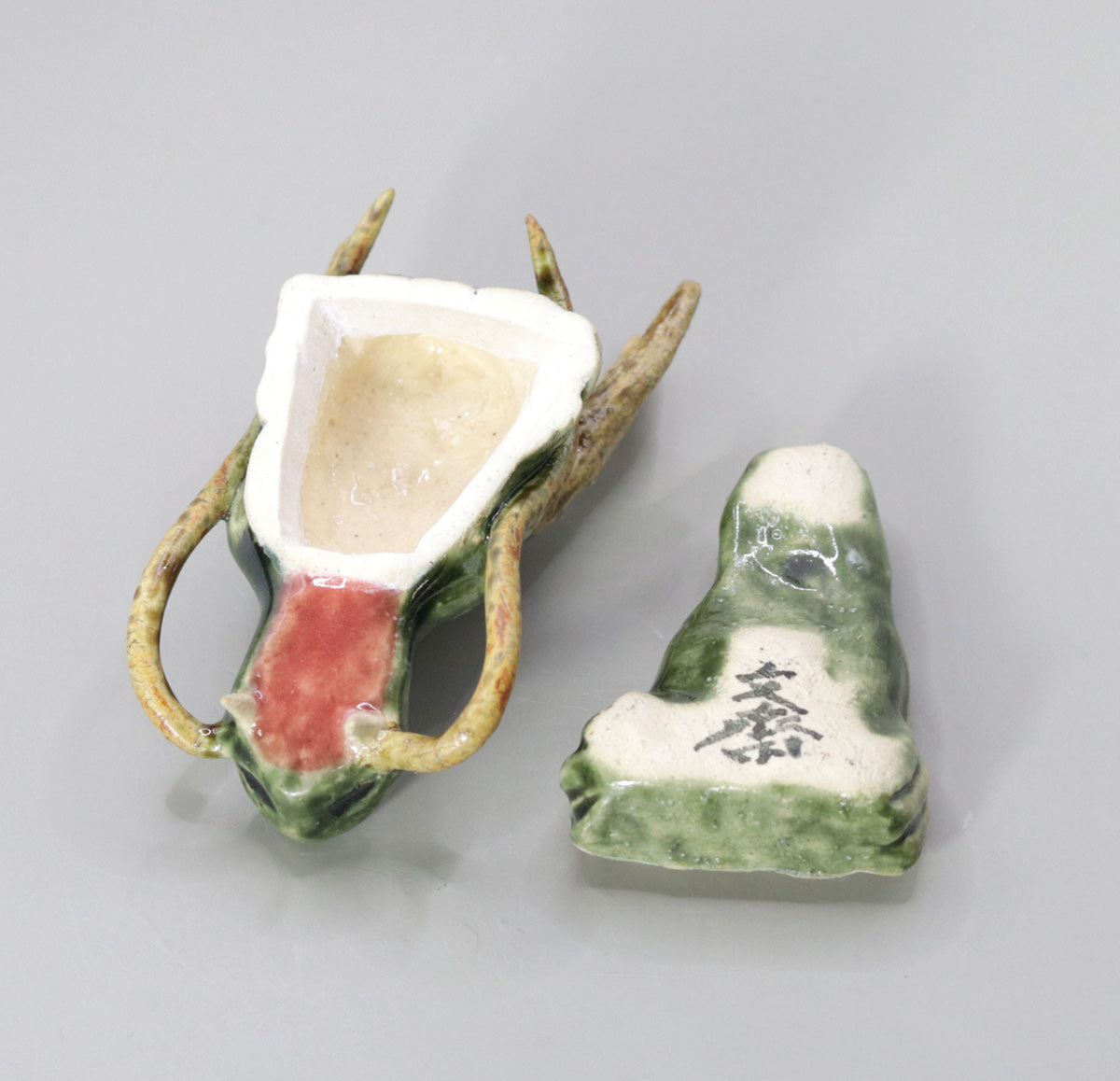Dragon head incense holder by Ogawa Bunsai
Dragon head incense holder by Ogawa Bunsai
Couldn't load pickup availability
Width: 12.0cm x 7.0cm Height: 8.0cm
Embracing the breath of the dragon - Dragon Head Incense Holder by the 6th Ogawa Bunsai
This piece, which has an unforgettable presence once you see it, was created by the 6th Ogawa Bunsai (Oki) and is a piece that embodies both dynamism and spirituality. The main theme of the sculpture is the dragon. Dragons have been revered as sacred animals since ancient times, and in the world of gods and Buddhas, they are considered to be spiritual beings that connect heaven and earth. In his attempt to incorporate the dragon into a tranquil vessel such as an incense container, Bunsai's solid sculptural ability and deep spirituality can be felt.
The depiction of the dragon in this work goes beyond mere realism, and harbors the "prayer" and "wish" that well up from deep within the artist. Its sharp yet warm gaze, open mouth, and majestically extending horns and whiskers all seem to have the momentum of flying through the sky at any moment, but they also have a certain tranquility and solemnity in their use as an incense holder. The dragon's figure, completely enveloped in green glaze, is a symbol of the "green" that Ogawa Bunsai has been exploring for many years, and is the very expression of his desire for peace and harmony in nature. Anyone who sees it will forget the passage of time for a moment. The depth of the glaze shows different expressions depending on the viewing angle, and when the smoke rises as the incense is burned, it permeates the space like the dragon's breath and quietly penetrates the hearts of those who see it.
Prayers Entrusted to Greenery - The World of Ogawa Bunsai VI
The creator of this piece, Ogawa Bunsai VI, was born in 1974 as the eldest son of the ceramist Bunsai VI from Gojozaka, Kyoto. He studied sculpture at university, then studied molding and glazes at the Kyoto Prefectural Pottery Technical College and the Municipal Industrial Testing Institute, and took on the name Bunsai VI in 2014. Even after taking over the family name, he has not rested on his laurels, but continues to confront the traditions of Kyoto ware and search for a form of "beauty" that suits the modern era.
Among these, Bunsai has been particularly devoted to his research into "green glazes." While his father, Bunsai V, created many passionate works using red, Bunsai VI was fascinated by the trees in the mountains and the capacity of the earth, and incorporated green into his own works. For Bunsai, green is not just a color, but a form of thought that symbolizes "peace," "comfort," and "coexistence between humans and nature."
In this work, that green is permeated into the dragon's form, going beyond the typical image of dragons such as anger or ferocity, and instead imbuing them with a quiet yet powerful guardian spirit.
History and techniques engraved in the kiln lineage
The history of the kiln that the Ogawa family has nurtured for 174 years lives quietly within this incense container. The first Ogawa Bunsai (Bunsuke) was born in Kaga Province in 1809, and after training in pottery regions around Japan, he learned the round kiln construction method in Arita, Hizen in 1834. In 1847, he opened a kiln under the patronage of the Ichijo family at Kaseyama in Kizugawa City, Kyoto Prefecture, and was given the character "sai" and family crest, founding Bunsai Kiln.
After the turmoil of the Meiji Restoration, the family moved to Gojozaka, Kyoto in 1873, and has been producing pottery here for six generations ever since. Despite difficulties, such as losing a successor during wartime, Kinji the fifth generation took on the name Bunsai and once again supported the family business, and the current sixth generation, Oki, is adding a more modern aesthetic sense to the business.
The climbing kiln, which has been designated a national tangible cultural property, is proof that it has survived through many eras, and this incense holder can be said to be an item that carries on the memory of that fire.
Incense holders as a form of prayer
It is not just pottery. It is a form that embodies the history of Bunsai Kiln, the thoughts of the artist, the scenery of the times, and the spirit of prayer. An incense container is originally a tool for creating a pure space, and is also like a boat that carries the smoke of incense to be offered to gods and Buddhas. A dragon, a guardian deity, appears at the bow of the boat. This rich symbolism is a beauty of form that could only have been born from the aesthetic sense and spirituality of the sixth generation Ogawa Bunsai.
In today's unstable times, the dragon is no longer just a legendary creature; it is a symbol of the "power to transcend" and the "will to harmony," and so should appeal to people's hearts once again.
When this "Ryuto Kohgo" is placed in your space, it becomes a spiritual barrier that goes beyond mere decoration, and begins to live as a "shape of time" that is wrapped in quiet protection and a rich story. Please take a look at this piece of pottery born from 150 years of inheritance of fire and earth.
Share
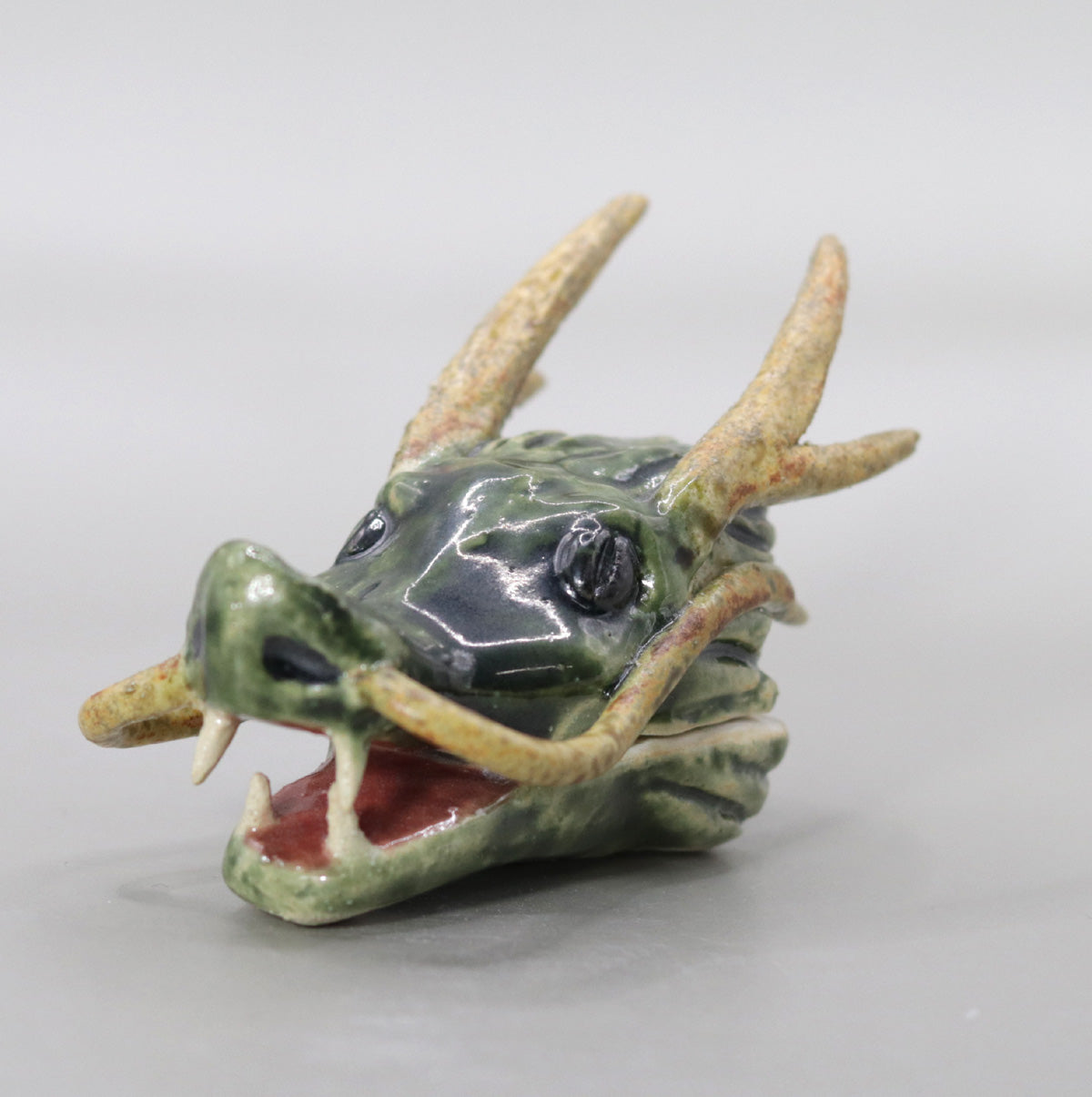
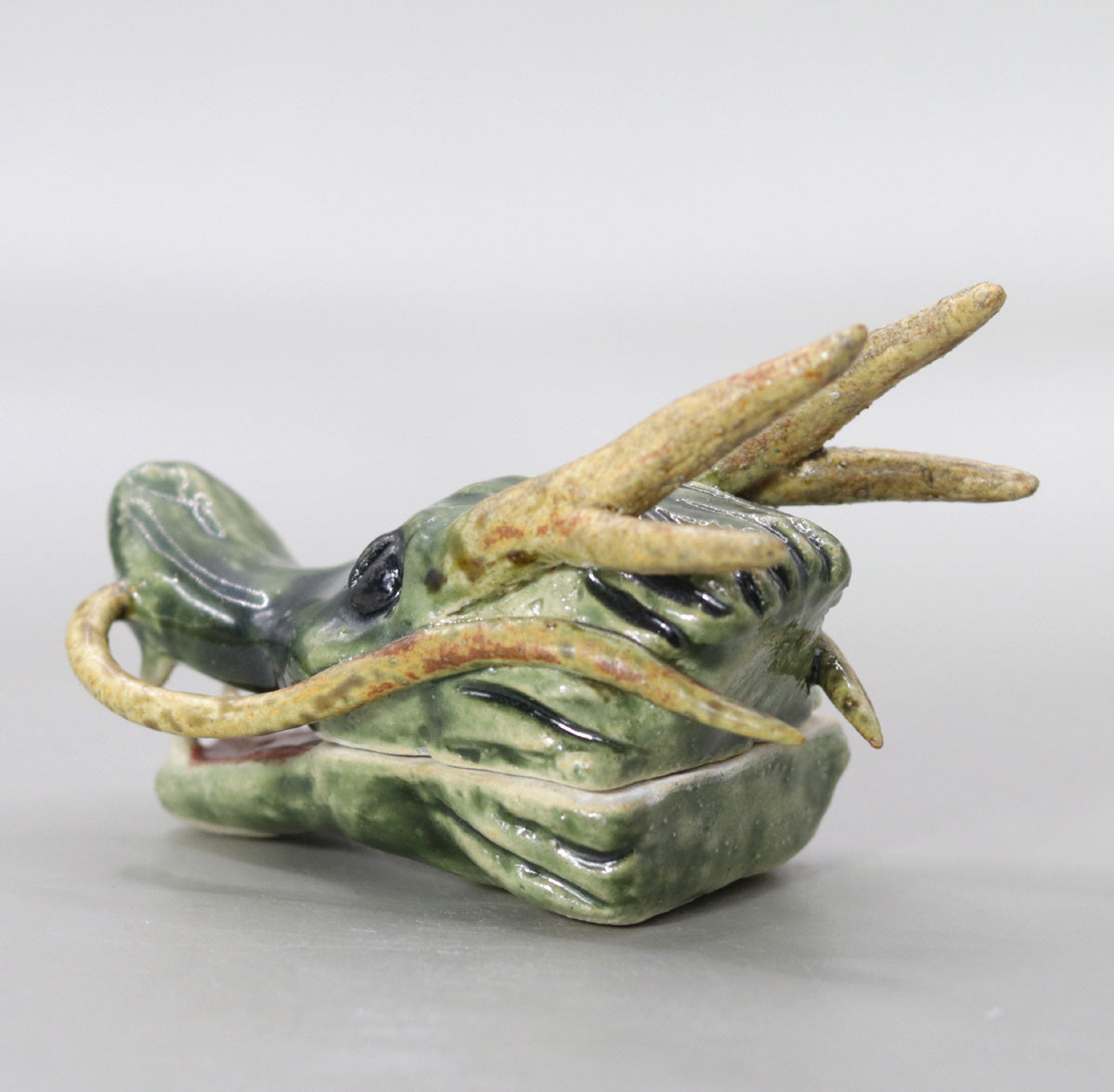
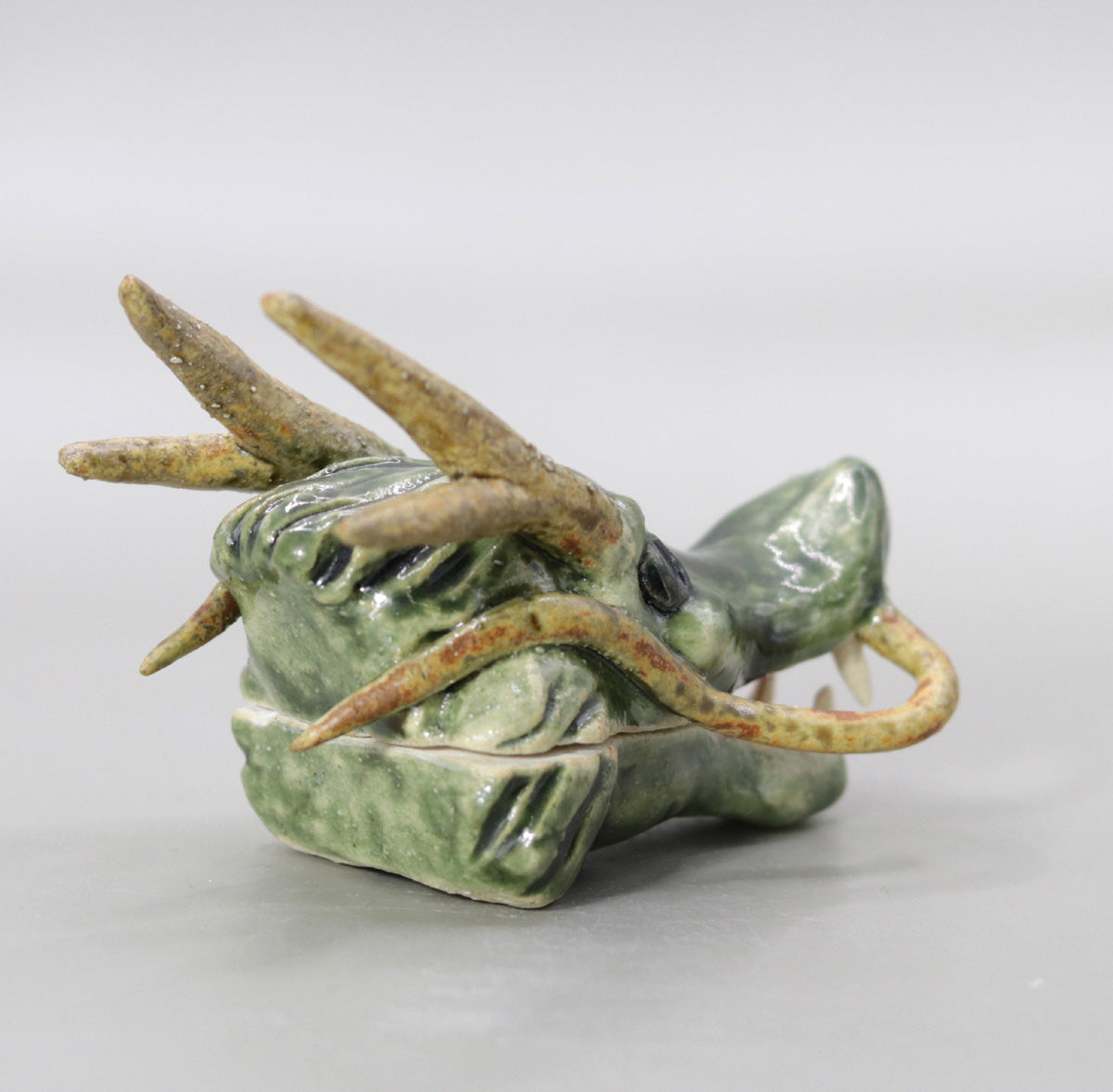
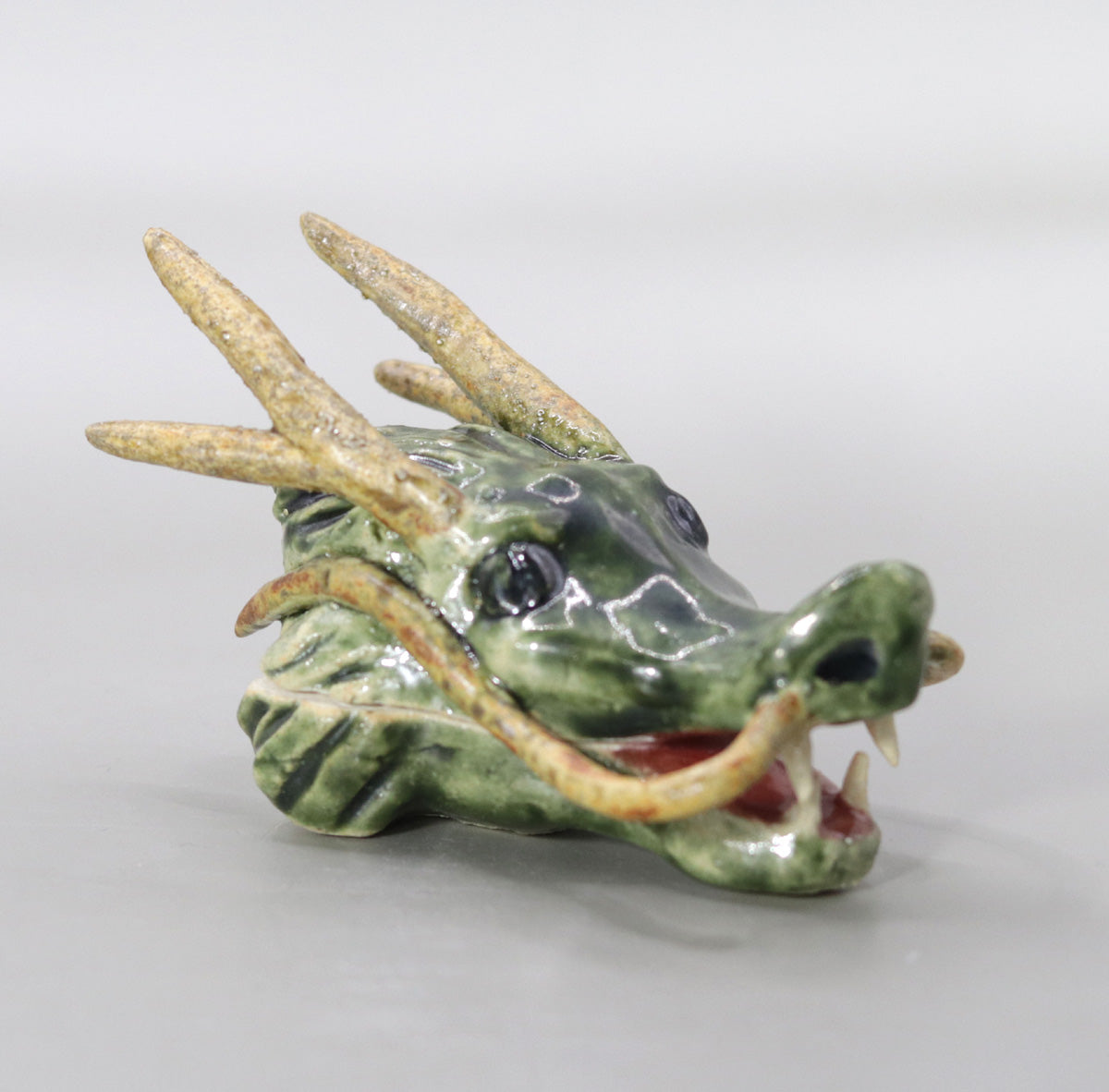
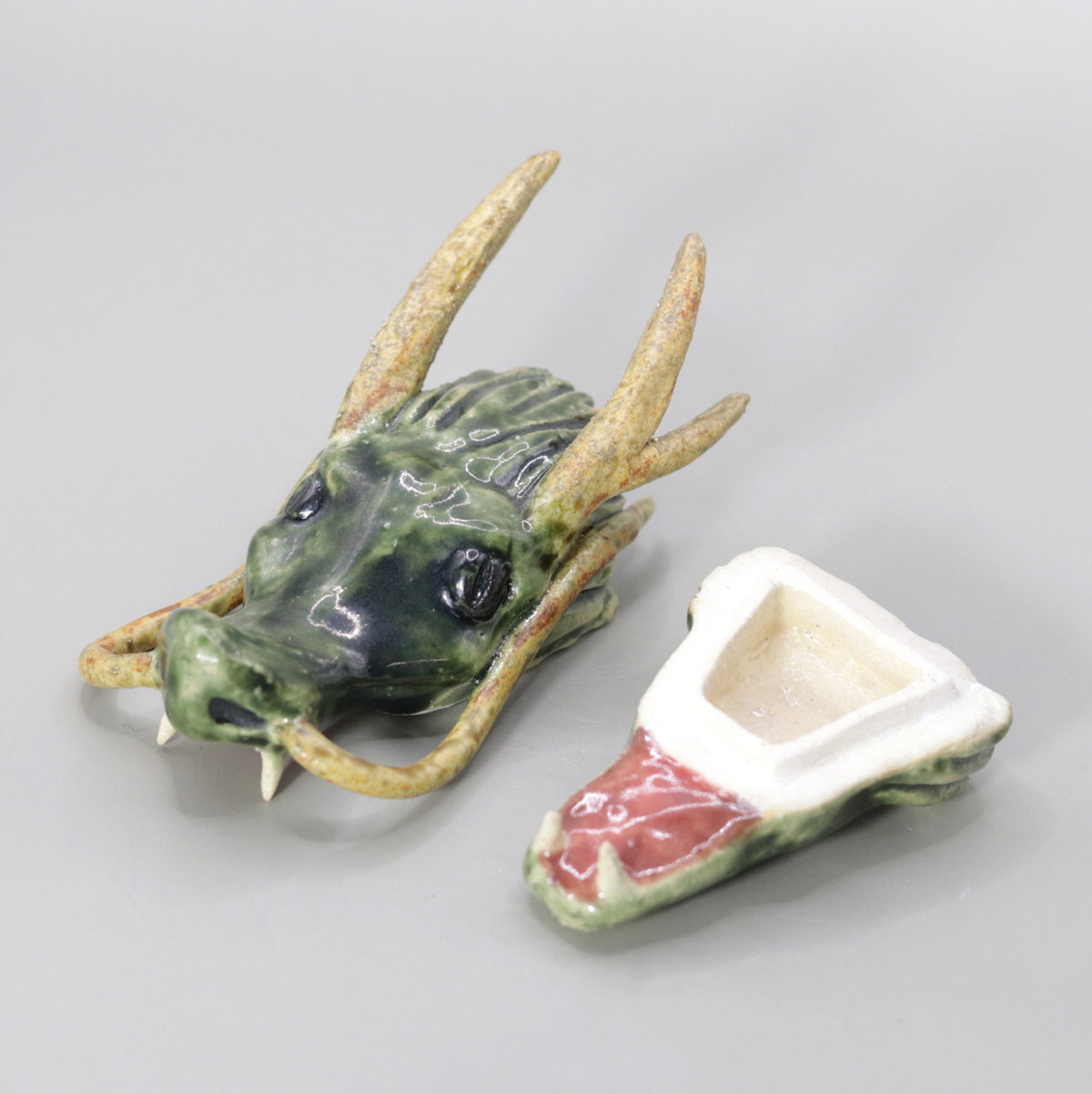
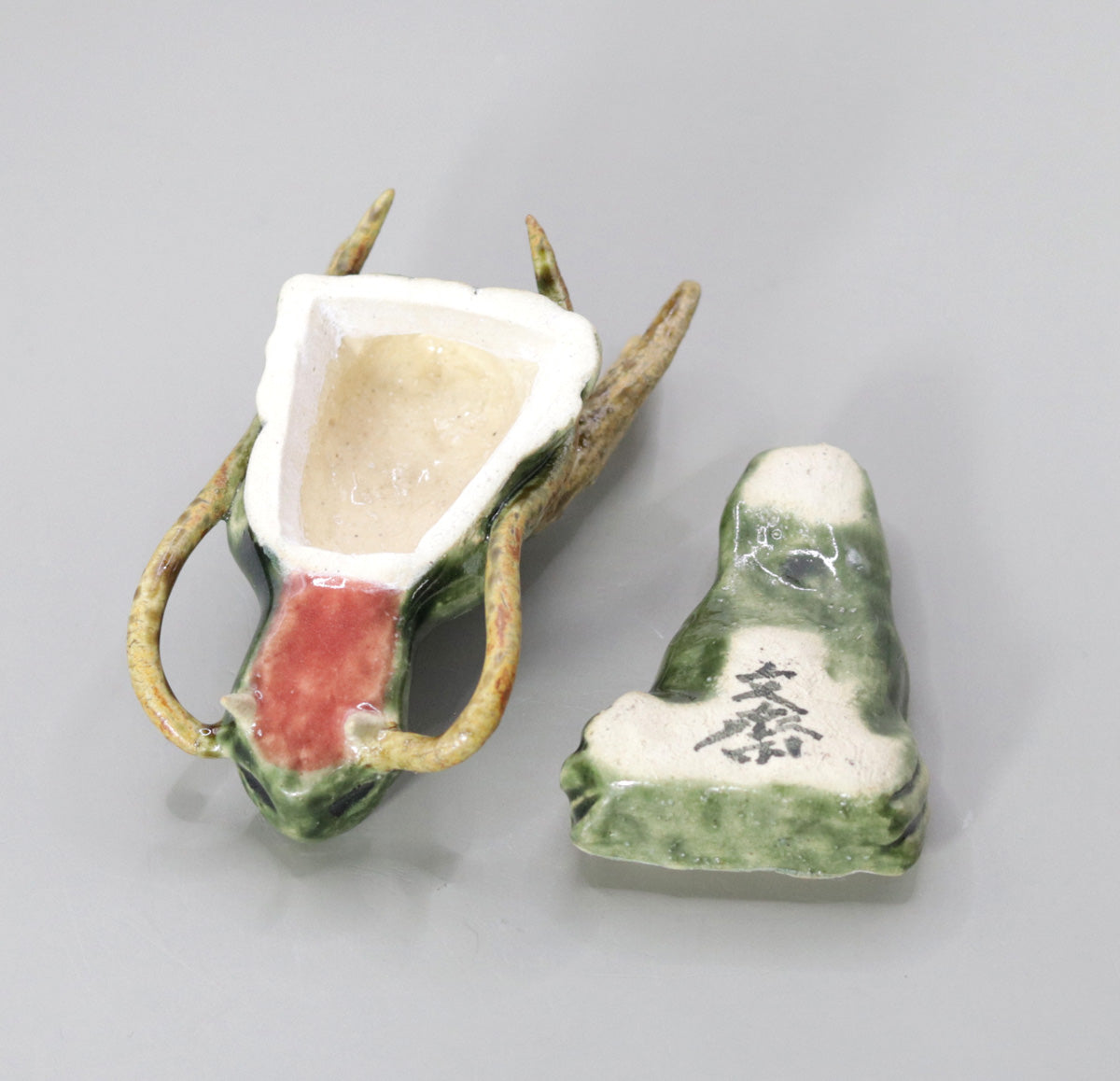
Multi-Column
-
[I will send it to you quickly and carefully]
We carefully package each product in a way that suits it best.
Also, delivery times vary depending on the piece (vessel, etc.).
Items that already come with a box will be shipped within 1-3 days of the order date.
For items that require a box to be made after your order, it will take approximately 30 days for production to be completed and then shipped.
In either case, once we have confirmed your order, we will contact you by email to inform you of the delivery date.
-
[Requests when purchasing pottery]
Even products that look the same may differ slightly in color, shape, size, etc.
The way the glaze is used, the power of the kiln, the firing method, the season, and the humidity also affect the appearance of the pottery.
Please understand the individuality of each piece of pottery and enjoy the unique warmth of handmade.

